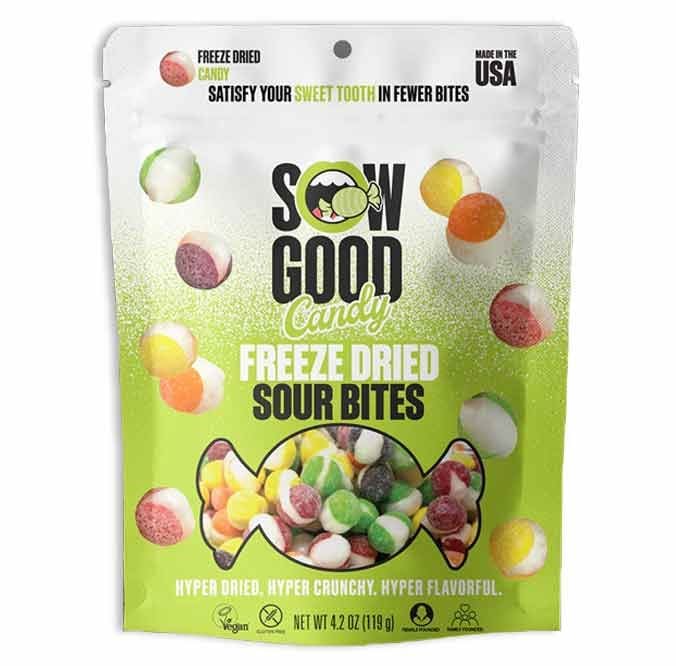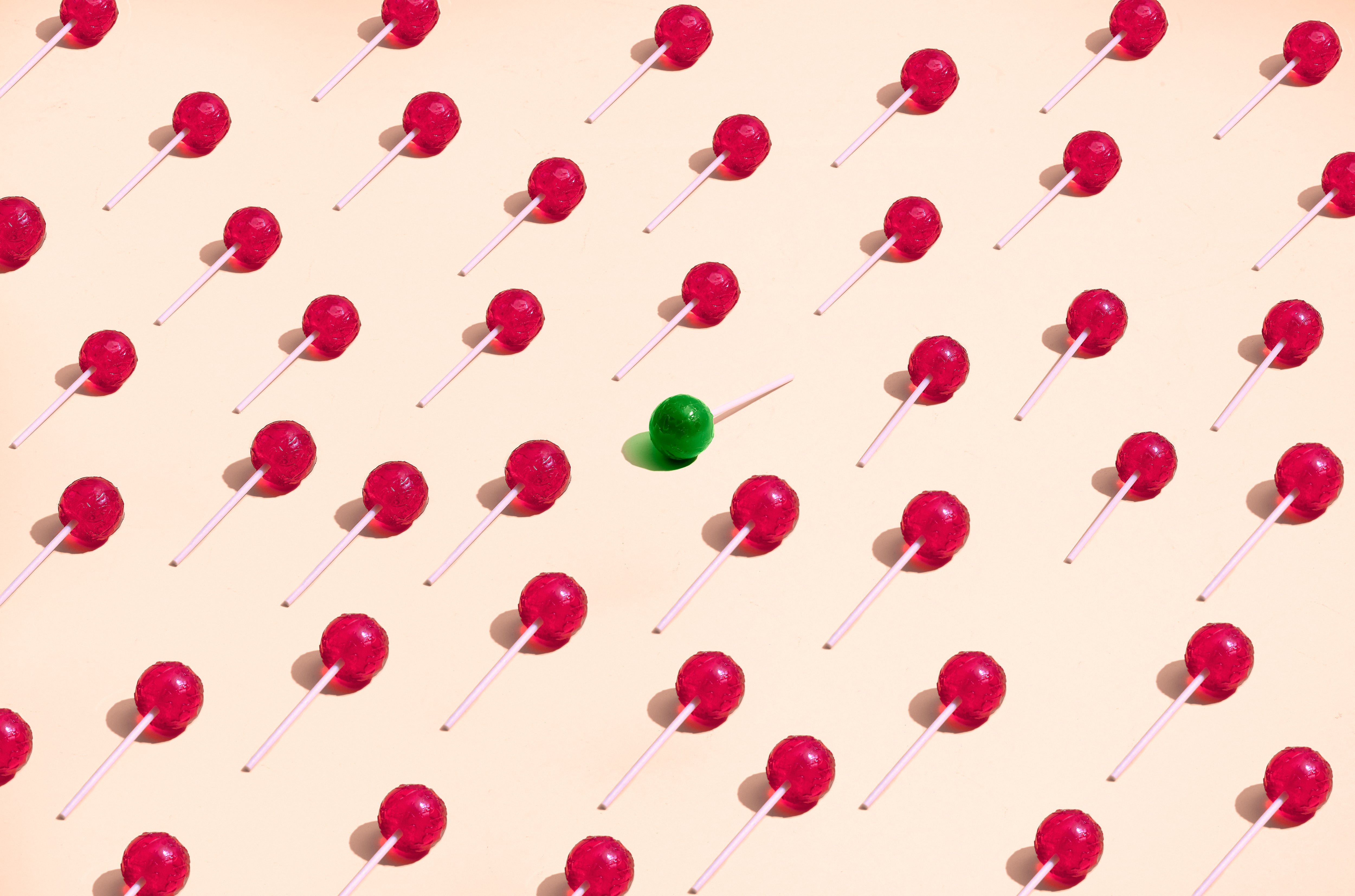Confectionery products’ flavours embody complex, multidimensional eating experiences that spur stronger connections between manufacturers and consumers.
According to global insights provider Mintel’s Future of Flavours report, this robust relationship will only intensify over the next two years. Shoppers will seek enhanced flavour experiences, navigate artificial versus natural flavour challenges, and engage in sensorial eating by optimising texture.
Exploration, engagement and catering to everything
Today’s consumers are avid searchers of flavour exploration, looking for nostalgia with a difference, bold combinations bursting with surprise and delight, and novel tastes catapulted into the confectionery sector via digital marketing and social media buzz.
Bringing global flavours directly to consumers’ doors creates further excitement and engagement. The predicted growth of the marzipan market (set to balloon to $1.5bn by 2031) led by brands such as Danish confectioner Anthon Berg which has a firm foothold in Scandinavia, is a strong example of regional candy trends going global.
Better-for-you formulations meanwhile, which offer health and wellness claims appeal to consumers increasingly seeking healthier alternatives. Us-based Unreal candy (see below) for example, has reduced sugar and added fibre and protein to many of its SKUs to reimagine clean-label confectionery that meets many of its customers' health goals.
These lofty aims can’t come at the expense of taste however, say Mintel. Ideally, products must cater to consumers' health needs and satisfy their indulgence needs. Bold, exciting and indulgent flavour profiles attract consumers seeking memorable experiences and familiar, comforting and wellness-related properties, say the insights firm.
Flavourful confectionery products
- Swiss flavour specialist Givaudan has released its TasteSolutions Sweetness range, designed to maximise and retain a product’s signature indulgent taste while reducing its sugar content.
- German brand Moser Roth (see link below) has formulated its Vegan Chocolate Couverture with Wholegrain Cookie Pieces to combine rich, smooth, melt-in-the-mouth texture with crispy dark cookie pieces. It combines this texture with cocoa, buckwheat and almond paste ingredients to offer a better-for-you appeal.
- Canadian brand Alice’s Sweet Tooth has developed its Double Chocolate Cookie Bites with a crunchy texture and rich indulgence taste. With better-for-you and better-for-you credentials, the brand has formulated its mini cookies to be plant-based and gluten-free.
Enhancement, ethics and evolving experiences
Over the next two years, Mintel predicts that confectionery flavours will evolve to become more complex and dynamic, reflecting consumer calls for multisensory experiences that maximise taste, texture and transparency. Here’s how
1. Taste enhancers and bold concepts
Elevating flavours, creating memorable experiences and deepening connections between manufacturers and consumers are high on the confectionery agenda between now and 2027. Expect to see taste enhancers provide promising potential for brands to develop flavourful formulations and mirror consumer preferences.
According to Mintel, 60% of consumers in selected European countries agree that taste is the most crucial aspect of food and drink.
Taste innovation is sought after yet remains limited. Factors like ageing, health conditions, medications and, in recent years, Covid-19 all impact consumers’ taste perceptions and enjoyment of food. Consequently, these differences in consumer experiences can affect eating habits, nutritional intake and quality of life.
Brands need to consider the effectiveness of their marketing strategies. Interestingly, to create broader appeal, they must acknowledge and cater to the breadth of consumers’ taste experiences and preferences. Formulations and campaigns that focus on taste impairments while delivering a memorable, joyful, and exciting culinary experience will likely attract wider audiences over the next two years.
The over-55s demographic, for example, provides a promising opportunity for brands that are big on flavour. According to United Nations population data, in 2024, there were 1.7 billion consumers aged 55 or over, and by 2030, the number of over-60s is expected to amount to one in six consumers. Almost a quarter (23%) of over-55s want new foods or flavours most or all of the time, presenting ample opportunity for brands to deliver new product launches that trial flavours, sensorial interactions and improved product quality.
Mintel recommends that brands looking to appeal to the over-55s demographic explore recognisable, established and potent flavours and focus on taste quality and satisfaction, which are particularly important for older consumers.
2. Getting the balance between natural and artificial right
With sustainability, biotechnology, and cost-consciousness as core trends in the confectionery space, the debate between artificial versus natural flavours and their development is expected to continue. The broader confectionery landscape, including consumer perceptions, health implications, and regulatory hurdles, also impacts the ongoing conversation over whether artificial or natural flavours will reign supreme.
With the rise of the natural, green and clean trends in recent years, natural flavours often come out on top with consumers due to their perceived health benefits and marketing success. However, artificial flavours are not without their manufacturing support, due to natural flavours’ higher costs, shorter shelf lives and complex regulatory obstacles. What is clear is that consumers want transparency across product packaging and storytelling to deliver credibility and build trust.
3. Texture amps up to offer multisensory appeal
Experimenting with crispy, crunchy and creamy textures is gaining traction across confectionery products and formats. With consumers wanting healthier alternatives and better-for-you claims, texture can help bolster healthfulness characteristics in sweet treats.

Techniques such as freeze-drying, hand-stretching and multi-layering confectionery products to contain multiple textures in one product can promote their perceived health credentials and popularity among consumers. Airy, whipped textures and purposeful processing (eg air popping and hand-stretching) can make food options healthier and more appealing to consumers.




